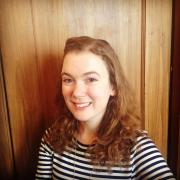Getting ready to set up a nursery? Make it as safe and nontoxic as possible with a few important green swaps when it comes to decor, furniture, bedding, and toys!
Paint: Avoid VOCs (volatile organic compounds) by using low or no VOC paints. After the room is painted, give it adequate time to offgas. Keep the windows open and use fans if possible to push air out of the room. This is especially important if you're pregnant. Healthy Child, Healthy World has additional tips on choosing safe paints for your nursery (or for any room in your home). For more information on paints, finishes, and adhesives, check out this comprehensive guide from the Sustainable Building Sourcebook.
Baby Bedding: Conventional bedding can be home to pesticides, chemicals, allergens, and more. Your best bet when it comes to fabric is organic cotton, which is easily accessible, soft and hypoallergenic. You can also try textiles made from hemp or bamboo. Re-Nest offers a detailed breakdown of different, nontoxic materials to look for as you select sheets, pillows, and more.
Here are a few key words to avoid as you pick out bedding:
- Permanent press
- No-iron
- Crease-resistant
- Shrink-proof
- Stretch-proof
- Water repellent or water-proofed
- California TB 117
Changing Pads and Pillows: Prevent allergic or asthmatic reactions by avoiding down feathers in your baby bedding. To avoid flame retardants in changing pads and pillows, which often contain foam, the Green Science Policy Institute recommends choosing pillows made from polyester, down, wool (also a naturally flame retardant fabric), or cotton.
Furniture: Choose solid hardwood if possible and avoid particle board. Choose a nontoxic finish by looking for the following words:
- Low-VOC stains and sealants
- Water based stains and sealants
- Finished with tung oil and beeswax
If you’re going to choose one piece of nontoxic furniture, the crib is the way to go: Newborns sleep an average of 16 to 17 hours a day. For all other nursery furniture, Healthy Child, Healthy World has a great nontoxic furniture buying guide, and The Smart Mama offers tips on what you can do to keep your nursery safe if/when you use particle board or off-gassing furniture. Check crib safety ratings by visiting Consumer Reports’ cribs page.
Toys: We know toxic chemicals like PVC don’t belong in kids toys. Unfortunately, toy manufacturers aren’t always on the same page. Look up toys on HealthyStuff.org and choose toys from their “No detected chemicals of concern” list and “Low detected chemicals of concern” list when possible. As you browse the HealthyStuff site, you can start to organize a list of toys that interest you with their product list tool. You can also find product ratings and suggestions for toys and other baby products on the Good Guide.




The views and opinions expressed in this post are those of the author(s) and do not necessarily reflect those of MomsRising.org.
MomsRising.org strongly encourages our readers to post comments in response to blog posts. We value diversity of opinions and perspectives. Our goals for this space are to be educational, thought-provoking, and respectful. So we actively moderate comments and we reserve the right to edit or remove comments that undermine these goals. Thanks!